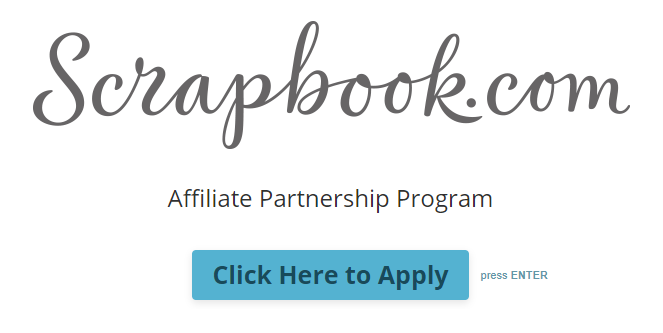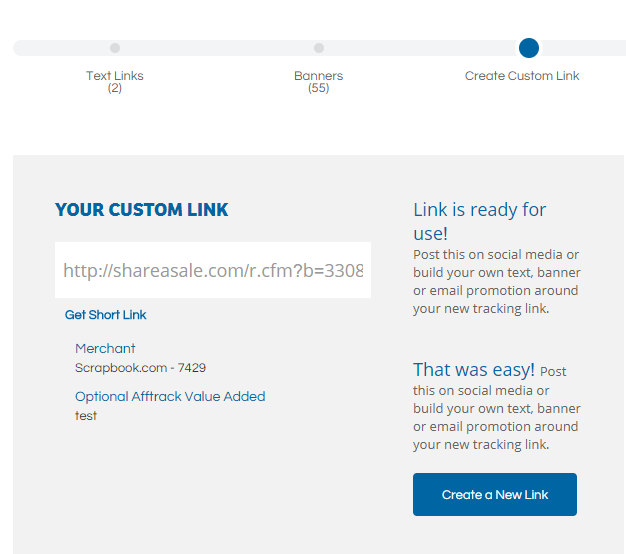Money Making Monday – Part Two
Joining an Affiliate Program + Five Tips on Closing the Sale

Money Making Monday (MMM) is a blog series that will show you all the information you need in order to take the first steps into making your craft profitable. This series is coming out twice a month, so make sure to subscribe and like our Facebook page and you will get the latest stuff that works!
In this second part of the MMM we will be looking into joining affiliate programs and how an affiliate program connects you with the shop so you can earn commissions.
At the end of the blog post we include FIVE proven tips to make people buy from your affiliate links!
If you haven’t already, please read the Part 1 of the MMM showing you how to start making money from your craft blog and also giving you a simple explanation about what affiliate links are.
Affiliate Terminology
Let’s start with some lingo to make sure we’re on the same page:
Commission: a percentage of the selling price or flat fee given to you from the shop or the product owner as a payment for bringing in a customer. In order for you to get a commission a person must buy a product or a service using special links that you provide.
Commission Example: a 10% commission means that if a viewer clicked on your affiliate links and shopped for $400, you will be getting $40 as a payment from the shop, for bringing the sale to them. In some cases, the commission can also be set as a fixed fee regardless of the price of the product.
Affiliate: You! Well, this is you, combined with the agreement for the commission above. A person that is promoting products or services using his/her affiliate link and who gets the commission.
Affiliate link: A unique link to a shop or product or a service that contains additional information regarding who the affiliate that generated the sale is. Any affiliate gets commission by getting people online to click on his/her affiliate link and then buy or perform a required action.
Example of the affiliate link:
Ordinary non-affiliate link to a product may resemble something like this:
https://www.scrapbook.com/store/pw-t-prs.html
An affiliate link that includes the information needed to assign the commission to the affiliate would look something like this:
http://www.shareasale.com/r.cfm?b=33184&m=7429&u=382789 &afftrack=linkdeli&urllink=https%3A%2F%2Fwww.scrapbook.com %2Fstore%2Fpw-t-prs.html
By the way, the mentioned product is this cut out:

Deep link: A link that points directly to a product instead of pointing just at the shop’s first page. Affiliates use deep links to take a visitor directly to a specific product instead of taking them to a shop or a large group of products/services.
The Process of Becoming an Affiliate with a Shop
Let’s say you want to receive commissions and get paid from the fictional shop we’ll call conveniently SHOP. You redirect people there to purchase stuff, through your blog posts and YouTube videos.
- You find SHOP’s dedicated page on the Internet where you express your interest to become their affiliate and apply to their affiliate program.
- SHOP accepts your application and informs you of their terms which usually includes the commission percentage and the cookie duration.
From that point on, you are an affiliate of SHOP! Well done!
Note: First you need to get approved in order to earn commissions. You fill out the application form on the website of the SHOP. Usually, you need to enter your name and one of the following: your blog, website or any social page. Usually, you also need to describe how you intend to promote products, SEO, Facebook, social accounts or in some rare cases paid advertising. It’s easier than it looks, just find an affiliate program, fill out a form and you get approved. Then you can start using your affiliate links and earn money.
Real example: Scrapbook.com
Scrapbook.com has a publicly available affiliate application page which can be found at the bottom of their main page.

If you apply, you are asked a few simple questions and your application goes through an approval phase.

As soon as you are approved, you can pick your affiliate links from ShareASale, the affiliate network that Scrapbook.com uses to track sales. You get your affiliate links and put them in your blog post.

Scrapbook.com is also fully integrated with LinkDeli and you can search and find all products without ever leaving your LinkDeli dashboard
What an Affiliate Must Know About Affiliate Links and Programs
There are a few dos and don’ts when using affiliate links. Here is a small list to start with. We will be expanding the dos-and-don’ts theme further in future MMM posts.
- Origin of sale: The sale must originate from you blog/YouTube channel and/or social accounts (not through paid ads in most cases)
- No paid ads to drive traffic: shop doesn’t allow affiliates to place paid ads containing the shop’s affiliate links. For example, you cannot place an AdWords Ad on the Internet, putting as the target link an affiliate link to SHOP. This is what most affiliate programs don’t allow, but there are some which do.
- Cookie expiration: The sale must be completed within a specific time frame (e.g. within 30 days). This is tracked with cookies which must be enabled on the user’s browser. If the sale is not completed within a specified time frame, it will not be credited to the affiliate.
- Last-click policy: If someone clicks on your affiliate link and then clicks on someone else’s affiliate link, the sale will be credited to the last affiliate that placed the sale cookie. This is a good reason to use the 5 tips at the bottom of this page to close the sale as quickly as possible.
- Whole basket: If someone clicks on your chewing gum affiliate link and ends up buying a whole television, you get credit for the whole sale and your percentage comes from the price of the television (and the chewing gum, if they ended up buying that as well)
So What is So Awesome About Affiliate Marketing and It is THAT Better Than Placing Ads on Your Site?
Affiliate marketing is not only about placing as many affiliate links as possible and hope someone is going to step on them!
In the DIY/crafting scene, it is actually like doing product review marketing as the products you sell are presented through your content.
If you create enticing and well thought of content, and present the shop’s products in a proper way, you will significantly increase the clicks to the shop. This will respectively increase your sales and commissions.
If the content is not presented well, or does not focus on how the products will help the viewer to achieve the same results as in your presentation, click numbers will suffer. The viewers will try to find more examples of the use of the product on other blogs/channels and leave. This usually means someone else will step over your affiliate cookies, and thus, you will be losing sales.
So, content you present on our blog needs to be of high quality and also needs to present key product’s benefits. Some products have unique attributes or qualities that should be mentioned explicitly. For example: “Only with product X you can achieve this result because product X is made out of component Y”. You need to answer the questions that a viewer might have if they were to buy it right here and now.
And why not use ads?
Placing ads on your page is a different type of monetization, depending mainly on the traffic volume rather than quality. Moreover, the payouts are much lower than what an average crafter makes through her affiliate links. We will be comparing ads and affiliate product review marketing performance on a future MMM!
5 Tips to Close the Sale as Quickly and Successfully as Possible!
- Use deep links: Deep links navigate directly to the product itself avoiding the noise that a store’s main page would introduce! You want your readers to fill their basket ASAP!
- Use shop-provided coupons: This makes it easier to close the sale here and now and prevent viewers from hunting for bargains on other shops leaving the shop webpage where you own the cookies!
- Subscribe to the shops’ affiliate newsletter: Most shops have a newsletter available only to affiliates. This is where you will find enticing upcoming deals and coupons to pull readers in, mentioned above in the number 2.
- Link to more than one shop: Your readers have preferences over which shops they like. Providing them with affiliate links to two or three shops gives them the power of choice and makes it easier to shop where they feel most comfortable.
- Ease their minds about affiliate links: Always mention to your visitors that you will be receiving a small commission for their purchase that will come out from the shop’s cut, not from them. They will feel they support you without spending a dime!
So, here’s what you’ve learned from this article:
- How to join an affiliate program
- Most important terminology and affiliate lingo
- Rules of affiliate programs
- 5 tips on how to close affiliate sales better quickly and successfully
- An example of a real application of affiliate model
We will be expanding our Craft/DIY money-making horizons even more on our next Money Making Monday!
If you wondered at some point if it is better to have non-affiliate ads placed all around your website and let YouTube display ads in your videos instead of using affiliate links, your question will be answered in our next MMM!
If you liked the article, it will help a LOT if you share it on Facebook, so please do!
